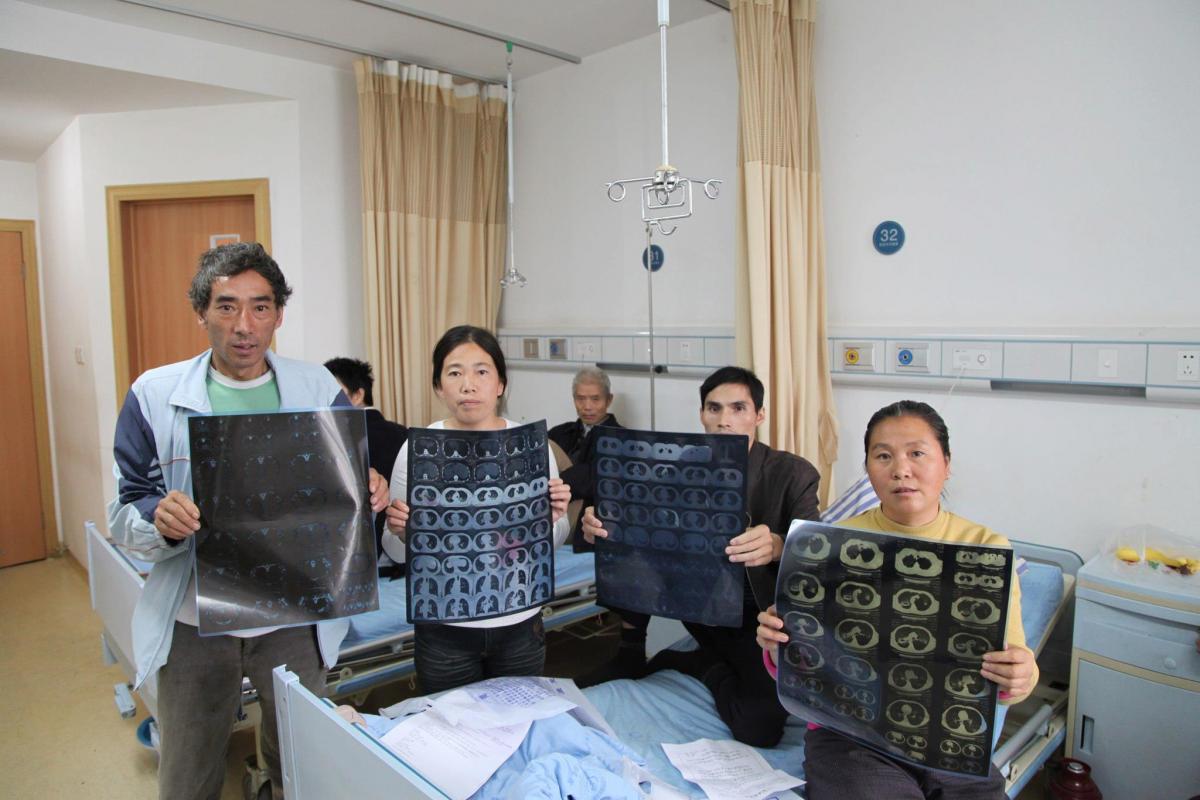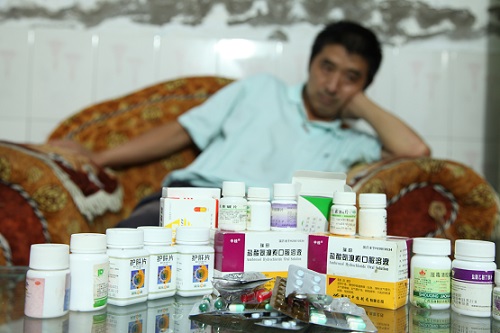Survey details the hard road travelled by China’s victims of pneumoconiosis [1]
31 July 2014A new survey of 612 migrant workers in eight provinces across China revealed that the process of seeking compensation for pneumoconiosis was expensive, time consuming and brought little reward.
Pneumoconiosis is by far the most serious occupational disease in China, with an estimated six million victims, nearly all of whom are migrant workers. Pneumoconiosis can only be contracted by working in a high-dust environment such as a mine, construction site or mineral processing factory for a sustained period of time. Every single case of pneumoconiosis in China should, by right, be classified as an occupational disease, yet according to a new survey by the charity organization Love Save Pneumoconiosis (大爱清尘) [2], only 25.7 percent of migrant workers with pneumoconiosis even bother to seek compensation from the government or their employer.
Such apparent apathy can perhaps be explained by that fact that, according to the survey, only 17.3 percent of those migrant workers with pneumoconiosis who sought compensation actually got any compensation. The survey of 612 migrant workers in eight provinces across China revealed that the process of seeking compensation was expensive, time consuming and brought little reward. More than 77 percent of those workers who did obtain compensation got less than 60,000 yuan.
More than 90 percent of respondents described the process of seeking compensation as either “very difficult” or “quite difficult.” Some campaigns for compensation lasted six years, while the average time period was nearly 17 months. And the average expenditure during this time was 6,529 yuan.
Only 18.8 percent of migrant workers sought compensation through legal channels such as labour arbitration and civil litigation, suggesting a distrust of the legal process, particularly in jurisdictions where the employer is located. Many workers believe, with justification, that courts and local government officials in the employer’s jurisdiction will be biased against them. In addition, 93 percent of respondents had never signed a labour contract with their employer, severely limiting their chances of proving a labour relationship, the first step towards claiming compensation.
By far the most popular means of seeking compensation (60 percent of respondents) was through collective action, a result that reflects the fact that pneumoconiosis cases tend to concentrated in rural communities where there are large groups of labourers who all worked together in the same mine, construction site or factory.
Collective action tends to be much more effective than individual cases because the complainants can pool resources and exert greater pressure on the employer or local government, as was the case in 2010 when a group of 180 migrant workers from Leiyang in Hunan travelled to Shenzhen to demand compensation for pneumoconiosis contracted working on the city's construction sites in the 1990s. After staging protests and threatening to sue to Shenzhen government, they were awarded with various levels of compensation, ranging from 70,000 yuan to 130,000 yuan depending on the severity of their illness. However, even in this relatively successful case, many workers found that within just three years, nearly all the money had gone [3].

Migrant workers with pneumoconiosis in hospital in Chengdu, Sichuan
The Love Save Pneumoconiosis survey showed in detail how the medical costs for migrant workers with pneumoconiosis can quickly add up, leading to severe financial difficulties for the worker’s entire family. The survey found that 67 percent of respondents had been hospitalized at least once in 2013 and that half of those had hospital bills in excess of 10,000 yuan. Most migrant workers were covered by the government’s rural cooperative medical insurance scheme but this only pays for a proportion of medical costs.
One of the key issues for migrant workers with pneumoconiosis is that, in many cases, they cannot work or can only get very low-paid jobs. More than half the respondents said they could no longer do manual labour and 18 percent said they could not even do household chores. Given that these workers were previously the family’s main bread winner, this disability drastically reduces the family’s income. The survey found that the average income of migrant workers with pneumoconiosis was just 10,080 yuan per year compared with 22,509 yuan for the migrant workers without pneumoconiosis who were interviewed. Average expenditure for migrant workers with pneumoconiosis on the other hand was 24,804 yuan a year, with half of that (12,364 yuan) taken up by medical expenses.

Migrant worker with pneumoconiosis with just some of the medication he has to take to manage the disease
The Love Save Pneumoconiosis report placed the blame for China’s pneumoconiosis crisis squarely on the employers in high dust industries who blatantly failed to protect their employees from dust inhalation, and the local government officials who just stood by and let it happen and then turned their backs on the victims when they sought help. The report calls for employers to be held accountable, for laws to be improved and properly enforced and for the government to set a special fund to compensate China’s six million victims of pneumoconiosis for their medical costs and economic losses.
For more information about pneumoconiosis and its devastating impact on China’s migrant worker communities, please see CLB’s three research reports on the subject dating back to 2005:
